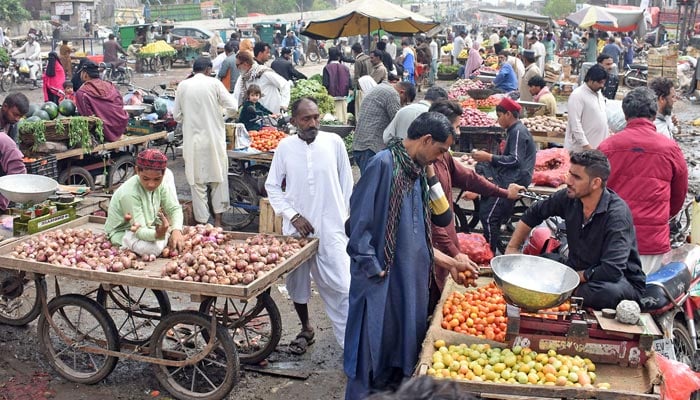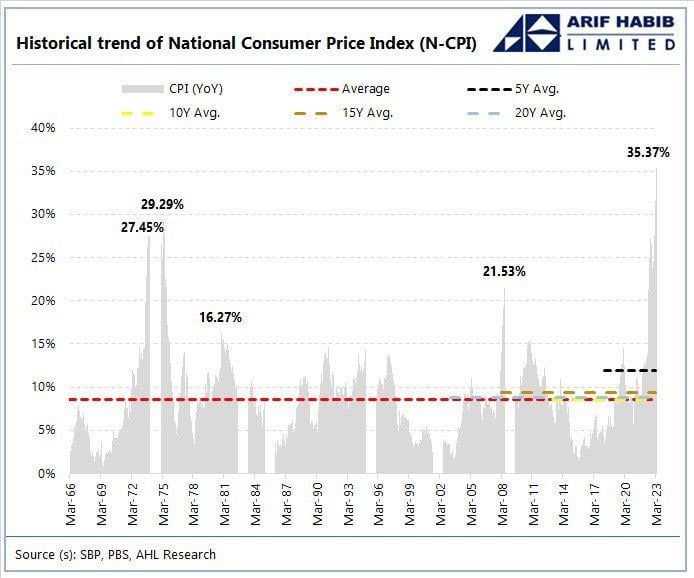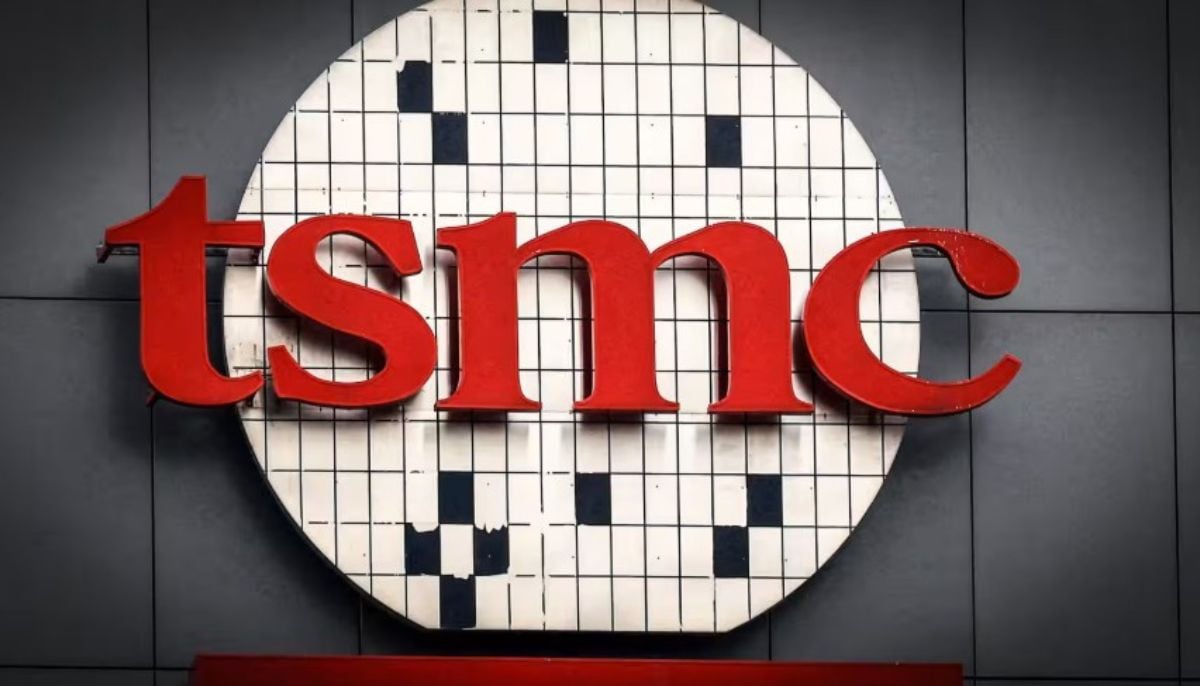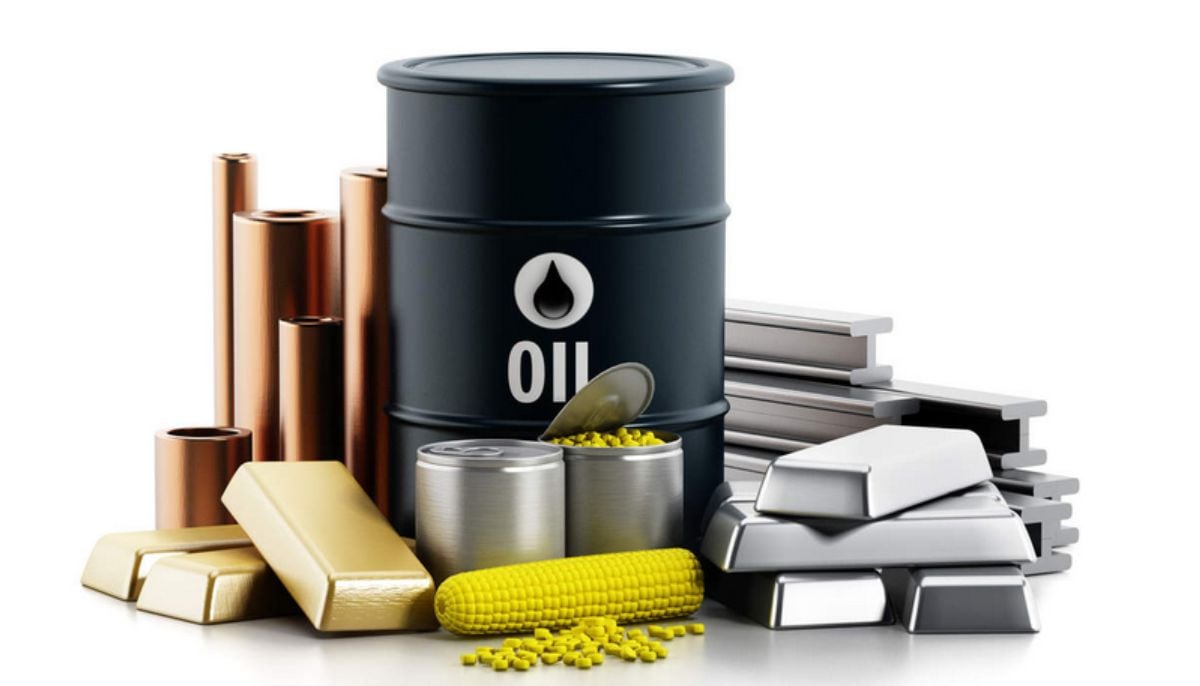Pakistan inflation shatters all records, tops 35% for the first time
Inflation rate hit the roof in rural areas where it was recorded at 38.9%, while it jumped to 33% in the cities
Pakistan's annual inflation rate tore past 35% in March, the country's statistics agency said on Saturday, the first time since the available data i.e. July 1965.
Data released by the Pakistan Bureau of Statistics (PBS) suggested that the country was fast heading towards hyperinflation, with at least three consumer goods groups already in the territory of around a 50% surge in prices yearly.
The monthly inflation rate; however, declined to 3.7% in March over February.
The pace of increase in the prices endorsed the expectations of the finance ministry that just a day ago said inflation was expected to stay at an elevated level owing to market frictions caused by relative demand and supply gap of essential items, exchange rate depreciation, and recent upward adjustment of administered prices of petrol and diesel.
The inflation situation has worsened to its worst, steeping the masses, whose purchasing power has eroded by leaps and bounds, into misery, as the price of almost every edible item has gone through the roof over a period of months.
Core inflation, which was calculated after excluding the volatile energy and food prices, increased in March to 18.6% in urban areas and 23.1% in rural areas.
Analysts believe Pakistan is rushing towards hyperinflation — a situation when prices are out of control and in the territory of a 50% surge.
The inflation rate went through the roof in rural areas where it was recorded at 38.9%, while it jumped to 33% in the cities, according to PBS.
There was a huge increase in the food inflation rate, mostly because of the disruption of supply chains and weak checks.
Food inflation rose steeply to 50.2% in rural areas and it also significantly increased to 47.1% in cities last month, the PBS data showed.
The federal and provincial governments are even unable to ensure steady essential food supplies.
The prices are soaring at a time when the economy has slowed down significantly and poverty, as well as unemployment, are spiking.
The prices of a majority of consumer goods remained out of the reach of the people, and a major surge was witnessed in rural areas where income levels were already low.
The food group prices surged by 47.15% in March against the same month a year ago.
There was an unprecedented increase in both perishable and non-perishable food items.
CPI breakdown
The inflation rate — which has lingered above 20% since June after the coalition government curtailed imports — has been aggravating due to the logjam of containers, the weaker rupee against the dollar, and the tough strategies implemented by the Ishaq Dar-led Ministry of Finance as an attempt to woo the International Monetary Fund (IMF).
The Wholesale Price Index (WPI), which monitors prices in the wholesale market, also rose sharply to 37.5% in March compared to 23.8% in the same month a year ago.
The PBS reported that the overall inflation rate recorded an increase in both the urban and rural areas. The inflation rate in urban areas surged 33% in March and rural areas soared 38.9% over the same month of the last year. In March last year, the inflation rate in urban areas was 11.9% meanwhile, in rural areas it stood at 13.9%.
The non-food inflation rate was recorded at 24.1% in urban areas and 28.5% in rural areas compared to 10.4% and 12.5% in the same month last year.
Within the food group, prices of non-perishable food items surged 46.44% on an annualised basis; meanwhile, the prices of perishable goods surged by 51.81% year-on-year.
-
AI boom set to lift TSMC’s Q4 profit by 27%
-
An eye on 'global economic instability' as shares slumps, tensions intensify
-
Tesla dethroned: BYD shocks EV market as top seller in 2025
-
China sets up $8.9B fund to boost 2026 consumer goods trade-in
-
Meta to acquire Chinese AI startup Manus to expand advanced AI capabilities
-
China to roll out action plan for digital yuan expansion
-
Amazon halts plan for 'drone delivery in Italy' just before launch
-
Europe’s crypto adoption gains regional momentum; Who’s investing the most?













